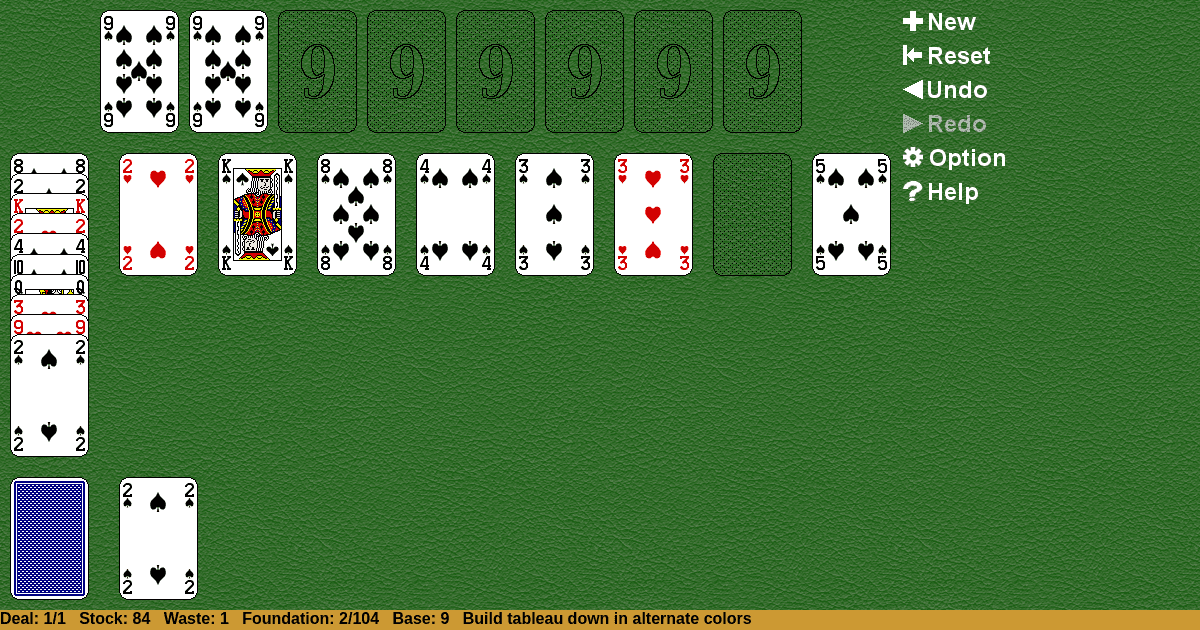Wood
Home |
How to play |
FAQ |
About
How to play Wood?
Game Objective:
The primary goal in Wood Solitaire is to remove every piece (peg or marble) from the board except one, with the final remaining piece ending up in the center hole of the board.
Setup & Layout:
- Board Type: Wood Solitaire is played on a wooden board with 33 holes arranged in a cross pattern (English board). Some variants use boards with 37, 41, or 45 holes, but the standard is 33.
- Pieces: 32 marbles or pegs are used, leaving the center hole empty at the start.
- Play Areas:
- Board: The entire board is the play area, consisting of holes (dents) for marbles or pegs.
- Central Hole: The center hole is left vacant during setup and is the target for the final piece.
- Face-Up/Face-Down: All marbles or pegs are visible (face-up); there are no hidden pieces.
Wood Solitaire Rules:
- Movement Principles:
- Only one marble or peg may be moved per turn.
- A move consists of jumping one piece over an adjacent piece (vertically or horizontally, never diagonally) into an empty hole directly beyond.
- The jumped-over piece is removed from the board immediately after the jump.
- Sequence Building:
- There is no suit, rank, or color; the sequence is solely based on valid jumps.
- Multiple consecutive jumps are permitted in one turn, provided each jump is legal (similar to draughts/checkers).
- Move Conditions:
- A marble or peg may only jump over one adjacent piece into a directly opposite empty hole.
- Jumps must be orthogonal (up, down, left, or right), never diagonal.
Gameplay:
- Turn Sequence:
- On each turn, select a marble or peg that can legally jump over an adjacent piece into an empty hole.
- Remove the piece that was jumped over.
- Continue making jumps with the same piece if possible (multi-jump), or end the turn if no further jumps are available.
- Introducing New Pieces: No new pieces are introduced during play; only the initial 32 marbles or pegs are used.
- No More Legal Moves:
- When no marble or peg can make a legal jump, the game ends.
- If more than one marble or peg remains, the puzzle is considered unsolved.
Winning & Losing Conditions:
- Winning: The game is won if only one marble or peg remains on the board, and it occupies the center hole.
- Losing/Unwinnable State: The game is lost or unsolvable if no legal moves remain and more than one marble or peg is left on the board.
Special Rules & Edge Cases:
- Filling Empty Spaces: Empty holes (created by jumps) are not refilled; only legal jumps into empty holes are allowed.
- Multiple Jumps: Players may make multiple consecutive jumps with the same piece in one turn if each jump is valid.
- Alternate Starting Holes: Advanced variants allow starting with a different empty hole and require the last marble or peg to end in that specific hole.
- Board Variants: Some boards have different numbers of holes (e.g., 37, 41, or 45), but the rules for movement and objective remain the same.
- Rotation and Reflection: Solutions may be considered identical if the board position can be rotated or flipped to match another position.
- Edge Case: If the final peg is not in the center hole, the puzzle is not solved according to standard rules.
Definitions:
- Jump: Move a marble or peg over an adjacent piece into an empty hole, removing the jumped-over piece.
- Orthogonal: Movement direction strictly up, down, left, or right—never diagonal.
This guide provides a precise, rule-focused overview for playing Wood Solitaire according to standard and official sources.

Solitaire Collection
About Wood
Rate (Wood)
4.7 / 5
1,916 votes



























































